Tillandsia Minima Latifolia
Click thumbnails for full size, scaled to a new window.
Tillandsia Minima Latifolia
form of T. latifolia. See T. latifolia for notes.
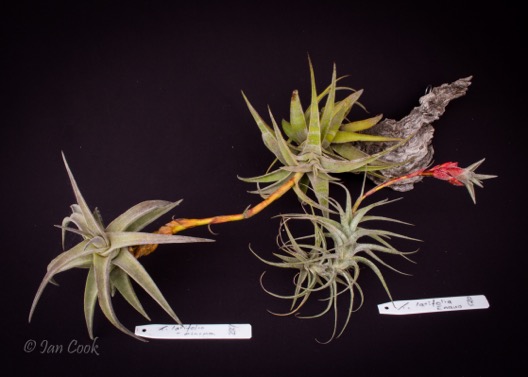 Ray Clark ... "This image of two different latifolias is sure to get some grey matter working amongst some?
Ray Clark ... "This image of two different latifolias is sure to get some grey matter working amongst some?
The larger plant mounted on wood and leaning to the left is minima, you will find this one on the DVD in the alphabetical listing for species. The smaller of the two is ‘Enano’ and is not mounted on wood, leaning to the right, this one is a registered cultivar.
Both have a similar trait in that offsets are in the first instance stoloniferous and then later also form the base of the original flower spike.
Size wise and leaf colour, they are both discernibly different to my eye. Worth a read to find out why one is considered species and the other not."
Derek Butcher ... "Yes, you could have a large collection just of the many forms of T. latifolia. From the botanists point of view there are only 4 different sorts but lots of synonyms. From the collectors point of view and a splitter rather than a lumper there are lots recorded in the BCR as cultivars. Minima latifolia is but one. With the DVD where do you file photos? Under the species or under the Cultivar name? The same problem arises with the many forms of T. ionantha. Therefore when checking names the first place to check is the species data base http://botu07.bio.uu.nl/bcg/taxonList.php and then the BCR. 'Enano' is an odd name. Is it Spanish or Latin? Exciting detail on the BCR.
Yes, they both have pseudoviviparous growth which they acquired by living in sand dunes in Peru. The things plants do to survive!
Ed: ... "This plant has now been registered as T. 'Minima Latifolia'."
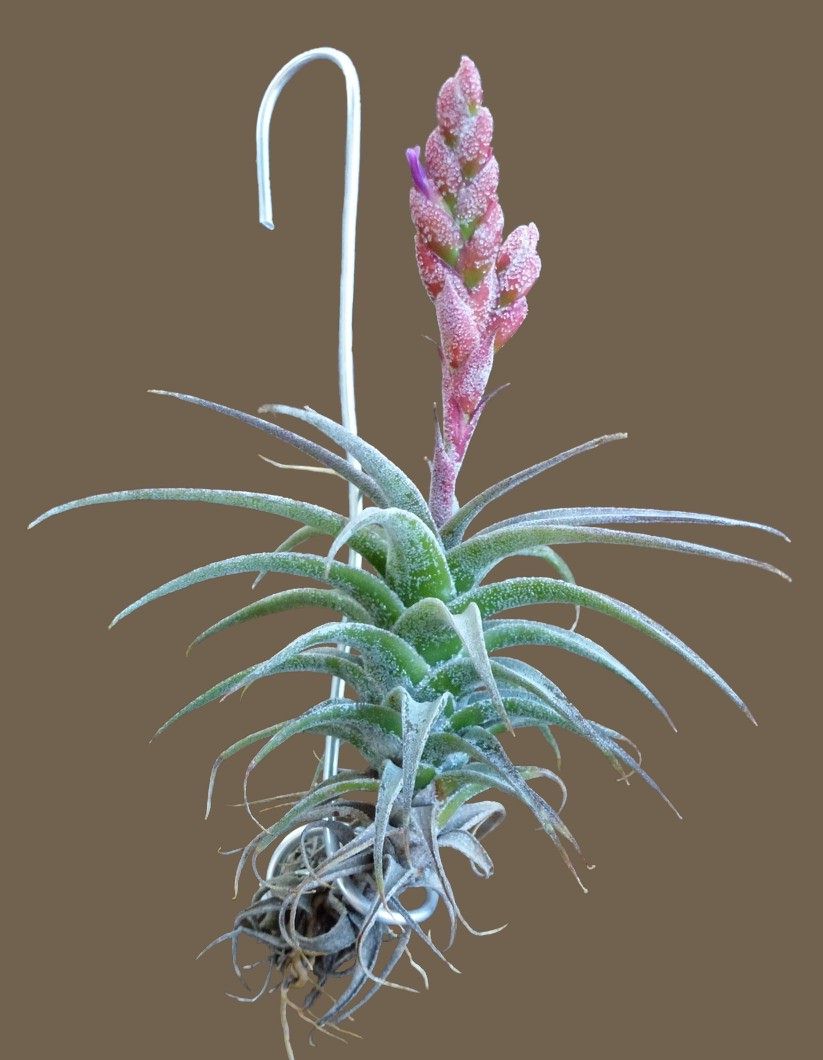

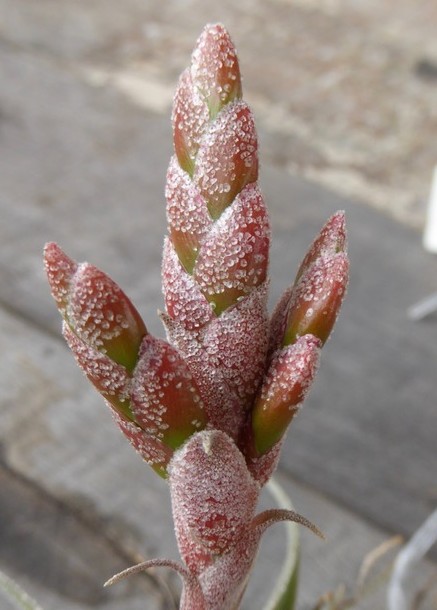
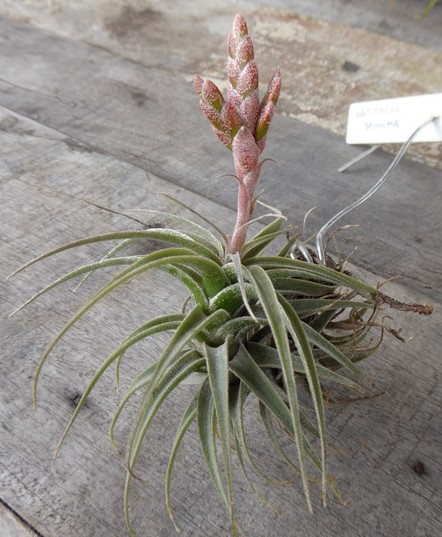
| Bruce Dunstan 10/14 |
Derek Butcher 10/14 |
Bruce Dunstan 10/18 |

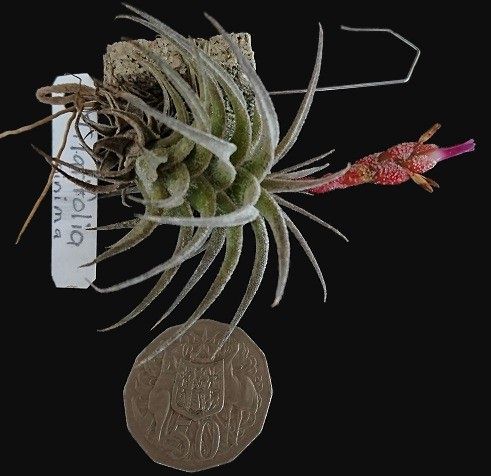
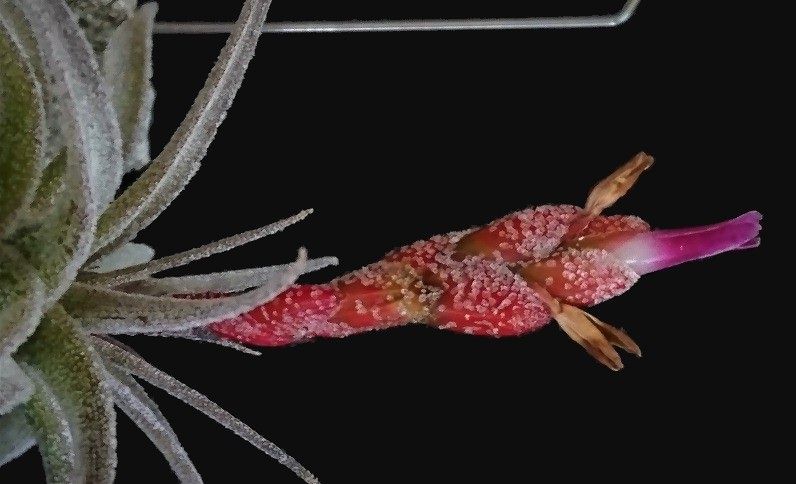
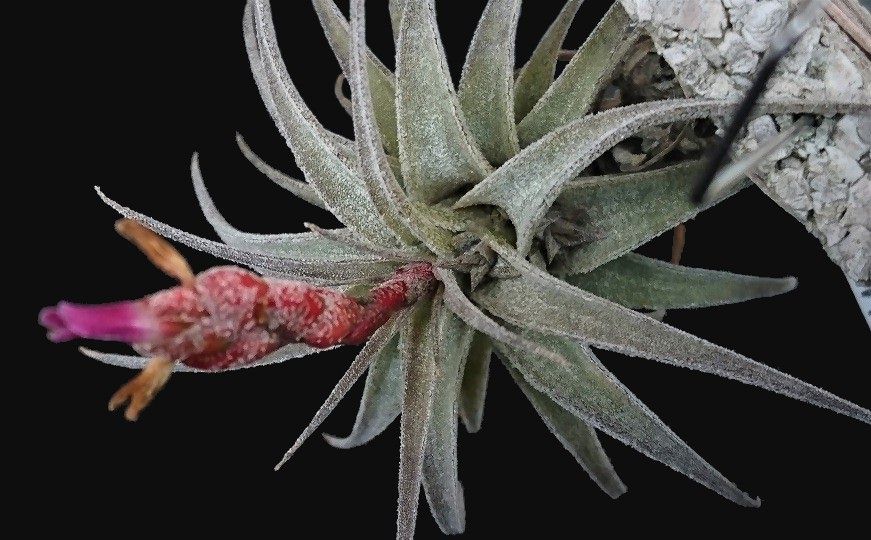
Bruce Dunstan Those of you with a good memory, may recall I posted an image a while ago of T. latifolia Enano that I got from Peter Tristram.
A lovely small clone of the hugely variable species T. latifolia. At the time Derek sent me a small plant and suggested I grow it under the same regime and see how it compared in terms of size and form. I can't remember how long ago it is that Derek sent me the plant but finally it has flowered.
Total size including flower spike is just over 100mm tall. Quite the dwarf and worthy of the name cultivar Minima. Most of my other latifolia are large plants with even longer inflourescences.
Many thanks Derek for sharing this beautiful plant.
George Nieuwenhoven Great little plant Bruce. I have had mine for perhaps 20 years and never flowered it yet, good so see you succeeded with it.
Geoff Lawn Derek: I'm a bit concerned about this unregistered nickname T. latifolia "Minima" in circulation, particularly since there is the registered T. 'Minima Tenuifolia'.
Specialists know the difference of course but the average grower will take the tag I.D. as verbatim if the species name is not on the label.
Derek Butcher Geoff: You have beaten the gun. Bruce had the challenge. Which was the smaller, Enano latifolia or Minima latifolia? There does seem sufficient difference to proceed with Knize's name. Do all agree?
Bruce Dunstan Much smaller plant in all aspects from my experience.
Derek Butcher So lets bite the bullet. Several other Tillandsia nutters have my 'Minima' so at least this clone will be recognised as different - I hope.
The enclosed is my summation of the situation and entry for the Cultivar Register.
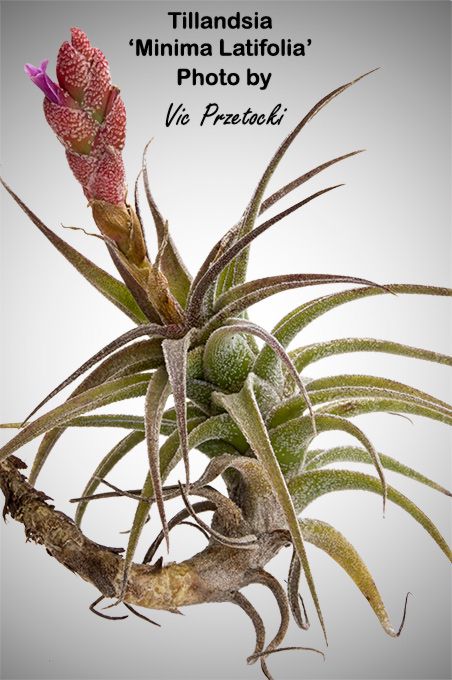

| Vic Przetocki 11/19 11cm tall with spike, 9cm wide |
Tillandsia ‘Minima Latifolia’ by Derek Butcher 11/2014
In 1982 I imported a plant from Karel Knize called T. latifolia minima and it was indeed very small. I was aware of Tillandsia ‘Enano’ from the Bromeliad Cultivar Register 1998 and named by Paul Isley and assumed my plant was the same. Note here that ‘Enano’ is from the Spanish for dwarf and if it had been ‘Enana’ which from the Latin would mean ‘not dwarf’! Over the years I kept seeing plants from Isley being grown in Australia that were bigger than mine. What was happening? Was my plant unique? Certainly the plants called ‘Enano’ were much bigger than the 6 cm high quoted in the BCR. Height is difficult to define on a caulescent plant and did it include inflorescence?
There is a slight twist in that there are, according to Paul Isley, two forms of ‘Enano Latifolia’ with nothing official as to the difference. If we refer to New Tillandsia Handbook 1998 by Hiroyuki Takisawa on page 67 we see ‘Enano Red form’ for a fairly large caulescent plant said to have reddish leaves so I am a bit confused! If we read Isley’s Tillandsia book 1987 page 70 we see ‘There is a slightly different form of Tillandsia latifolia ‘Enano’ (now ‘Enano Latifolia’). It is similar in size and appearance but it is found in a different geographical location. The blades are broader – often 2 cm in diameter. Also, the plant is browner and lighter in color.’
Back to ‘Minima’ which for me flowers at 10cm high including flower and with leaves 4 cm long. In 2011 I sent an offset to Bruce Dunstan who flowered this in 2014 and came up with the same size as mine. It seems sufficiently different to be called ‘Minima Latifolia’.
Botanists show us a wide ranging forms and sizes and although it is fairly easy to identify the species, T. latifolia, it is very difficult to identify the varieties and to pore through the many synonyms. Nurserymen, namely Dennis Cathcart and Paul Isley have named 7 forms but not formally registered them and the garnered descriptions in the BCR are somewhat vague. We can only use photos as a guide to identification. There are also pet names used that are also difficult to identify like Knize’s T. skinneri !

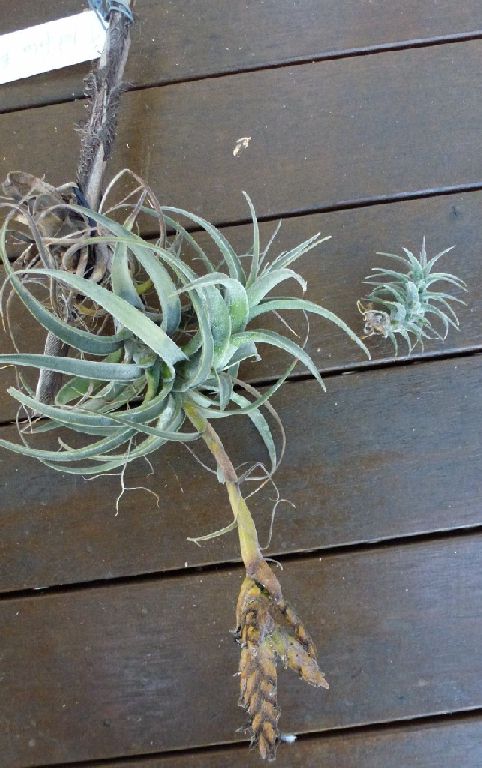
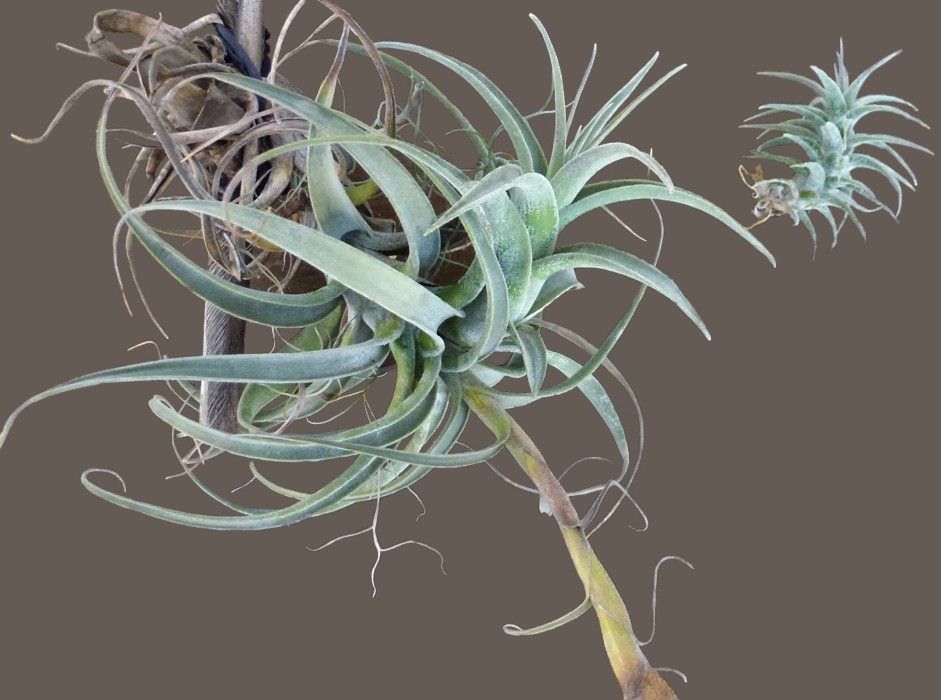
| T. ‘Enano Latifolia’ red form, New Tillandsia Handbook, 1998. |
Bruce Dunstan. Comparing versions 09/12. * |
* Bruce Dunstan, 27/09/12.
Here is the photographic evidence of the two Enanos. The larger from Pedro the smaller from Uncle Derek (Ed. now called T. ‘Minima Latifolia’). Growing together for more than 12 months.
Updated 09/02/20
















